The Thecus N2800 -
The Thecus N2800 is a two-bay network attached storage device. It is powered by an Intel Atom D2700 CPU with 2GB of RAM. This is attached to what is really little more than a Mini-ITX motherboard and running on an Intel ICH10R controller (for the RAID and HDD functions) Interestingly Thecus has chosen to put both a VGA and HDMI port on their product to allow you to directly monitor the device. This addition is a little unusual, but is also welcome in a world where much of what your NAS is doing is hidden from view.
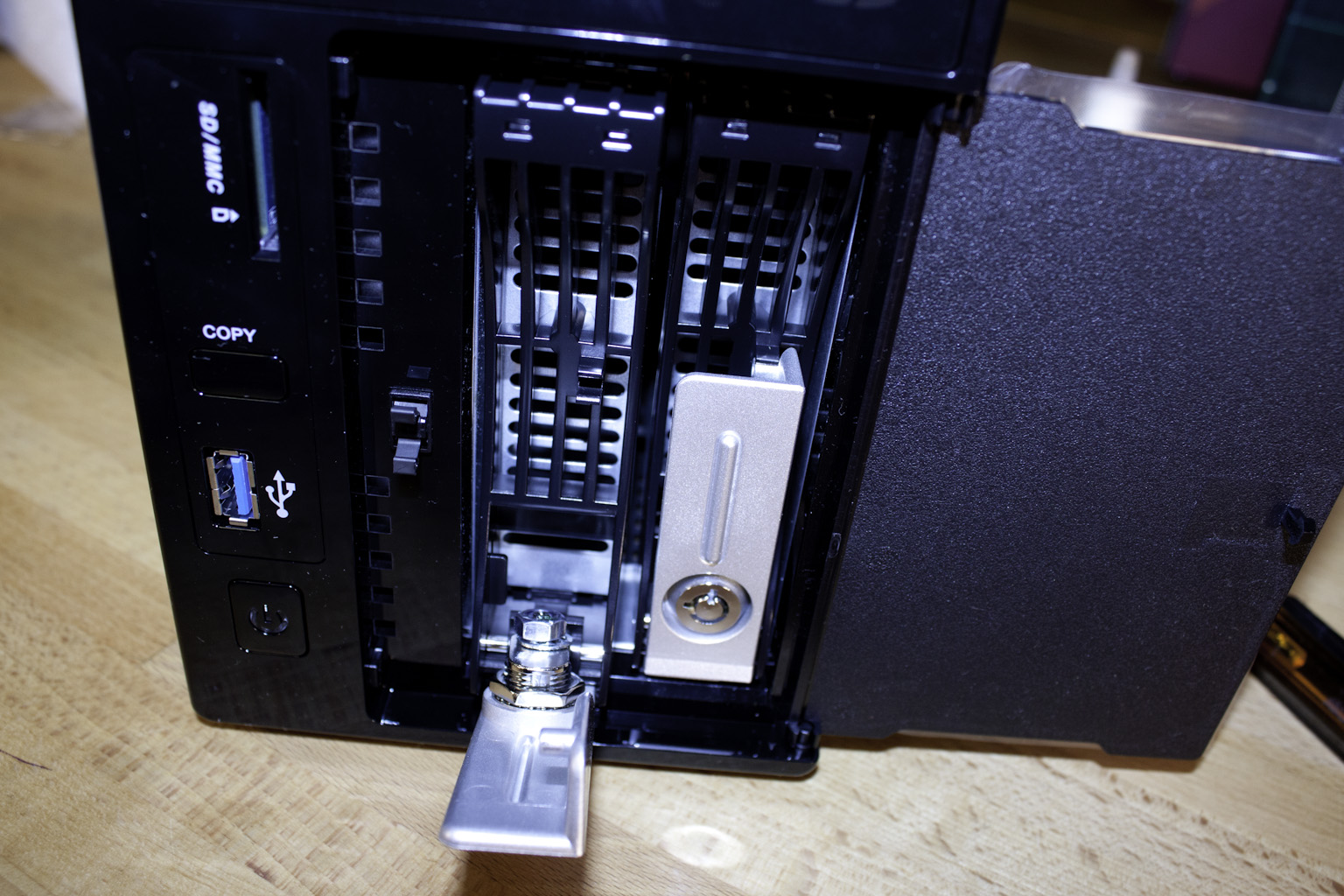 |
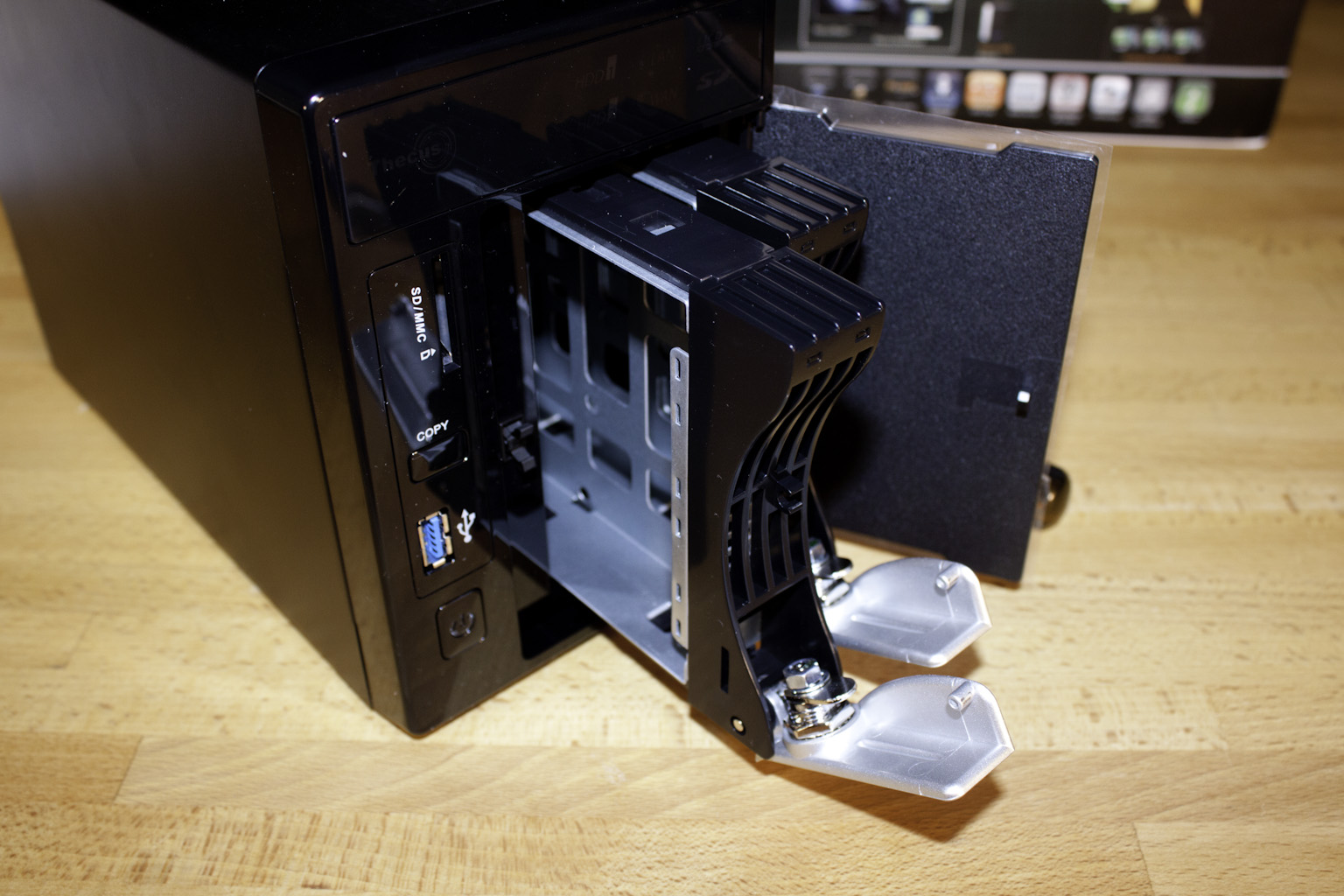 |
The front two bays are lockable to keep your drives securely in place (it is nice to prevent someone from accidentally removing a drive) and are behind a spring loaded door cover. Next to the drive bays we find the power button, a USB 3.0 port, a “copy” button (that we will talk about in part II of the review) and an SD/MMC port. Above all of this we find the activity lights; power, HDD, LAN, SD etc.
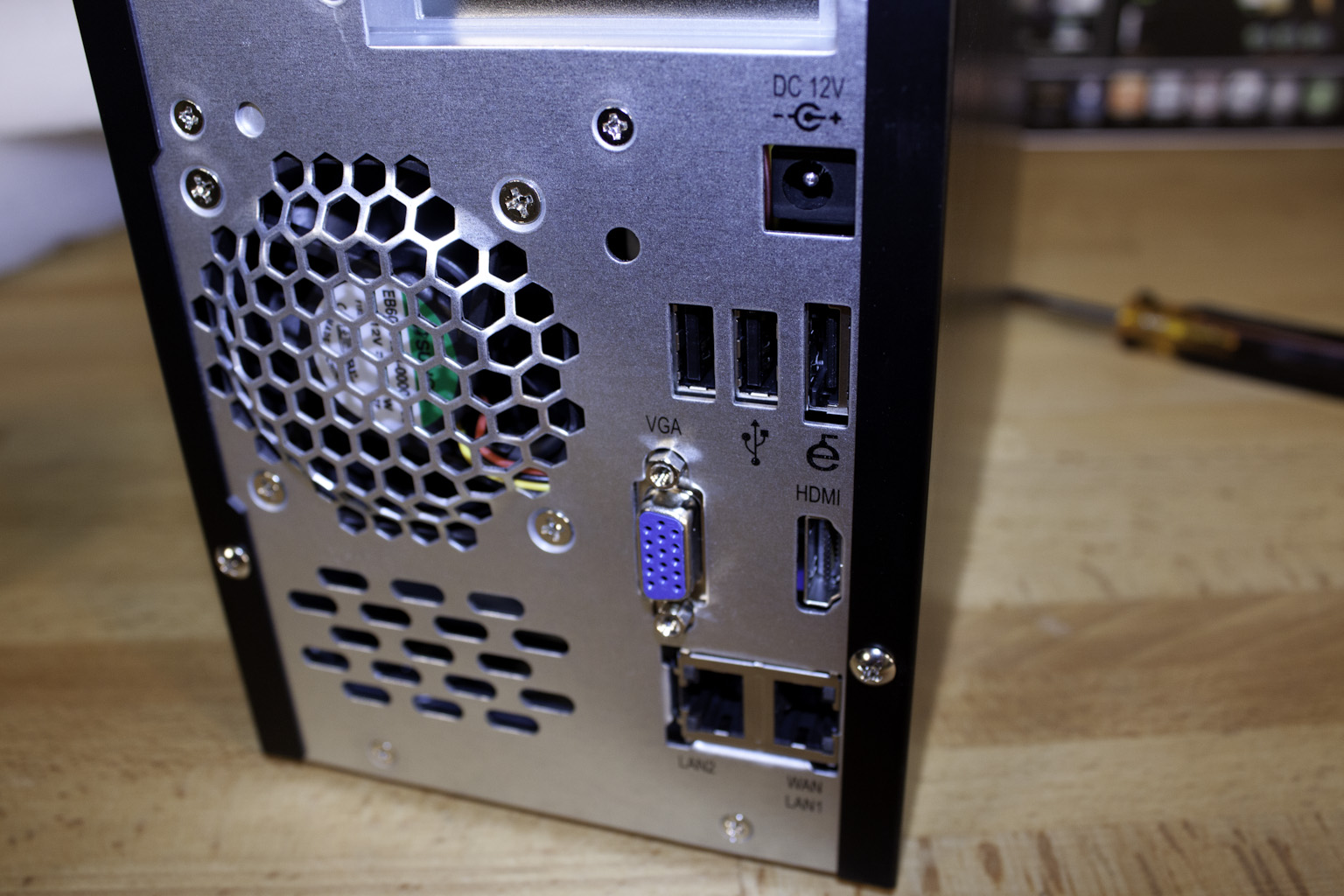
On the back you have some decent options for input/output. As we mentioned before you have dual LAN ports that are capable of handling 802.3ad LACP (Link Aggregation Control Protocol) along with quite a few other options (Load balance, Failover, Balance-XOR, Balance-TLB, Balance-ALB). The Thecus N2800 also supports thin provisioned iSCSI. This is a nice feature and means that you could potentially use this as a central storage for a Virtualized environment or even as external storage on a desktop system to keep images and video close at hand (iSCSI with 802.3ad and the right switch is very fast).
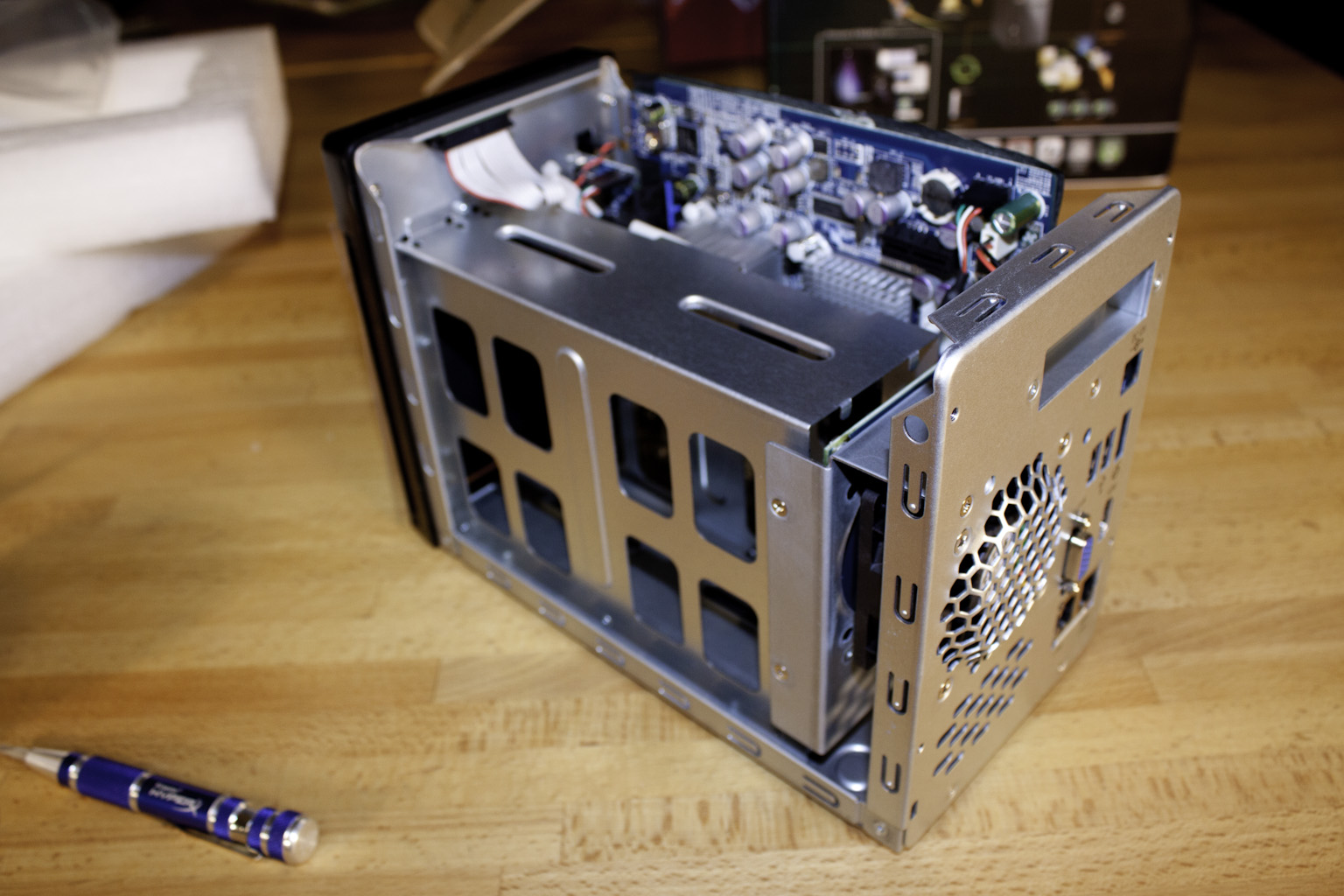 |
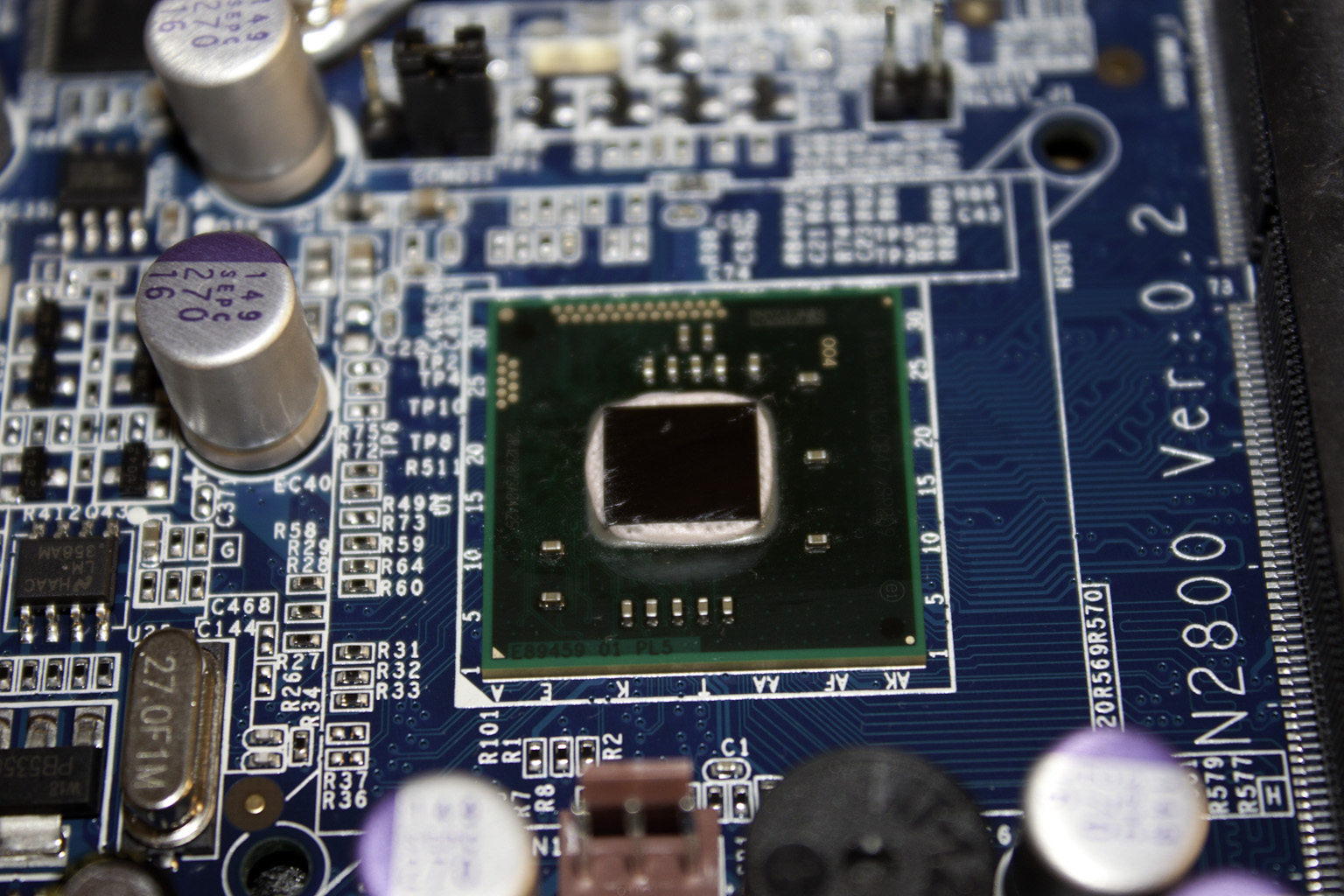 |
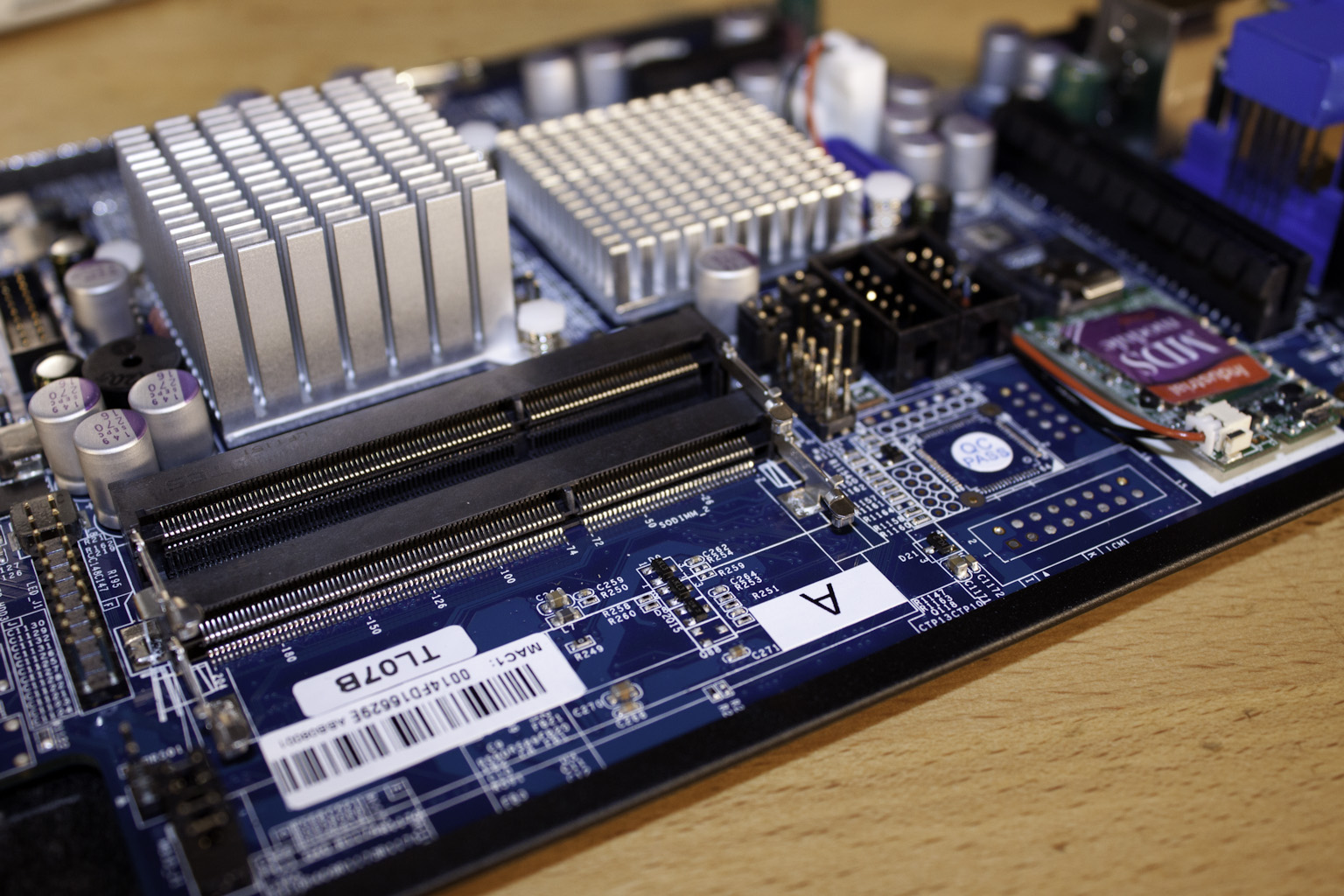 |
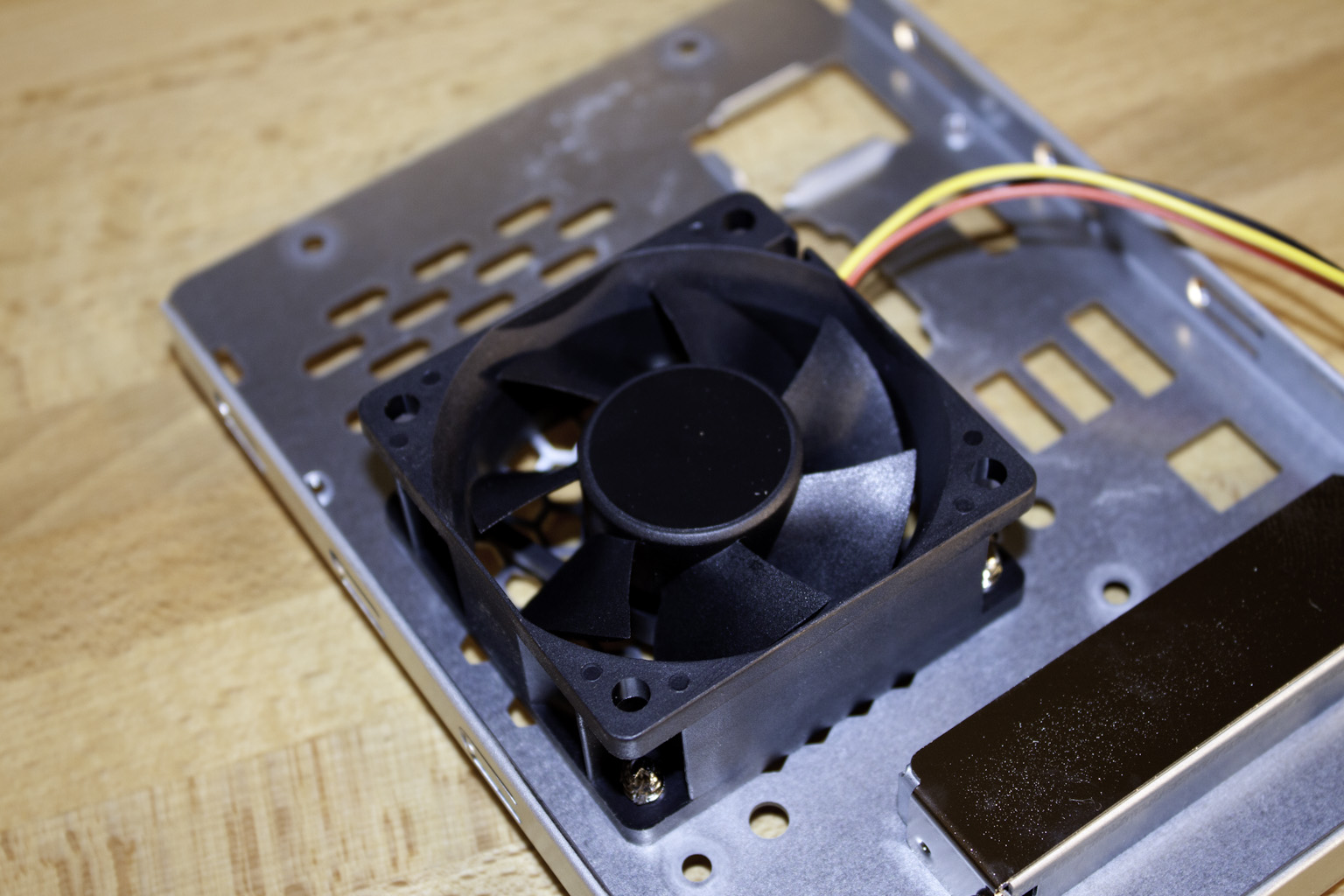 |
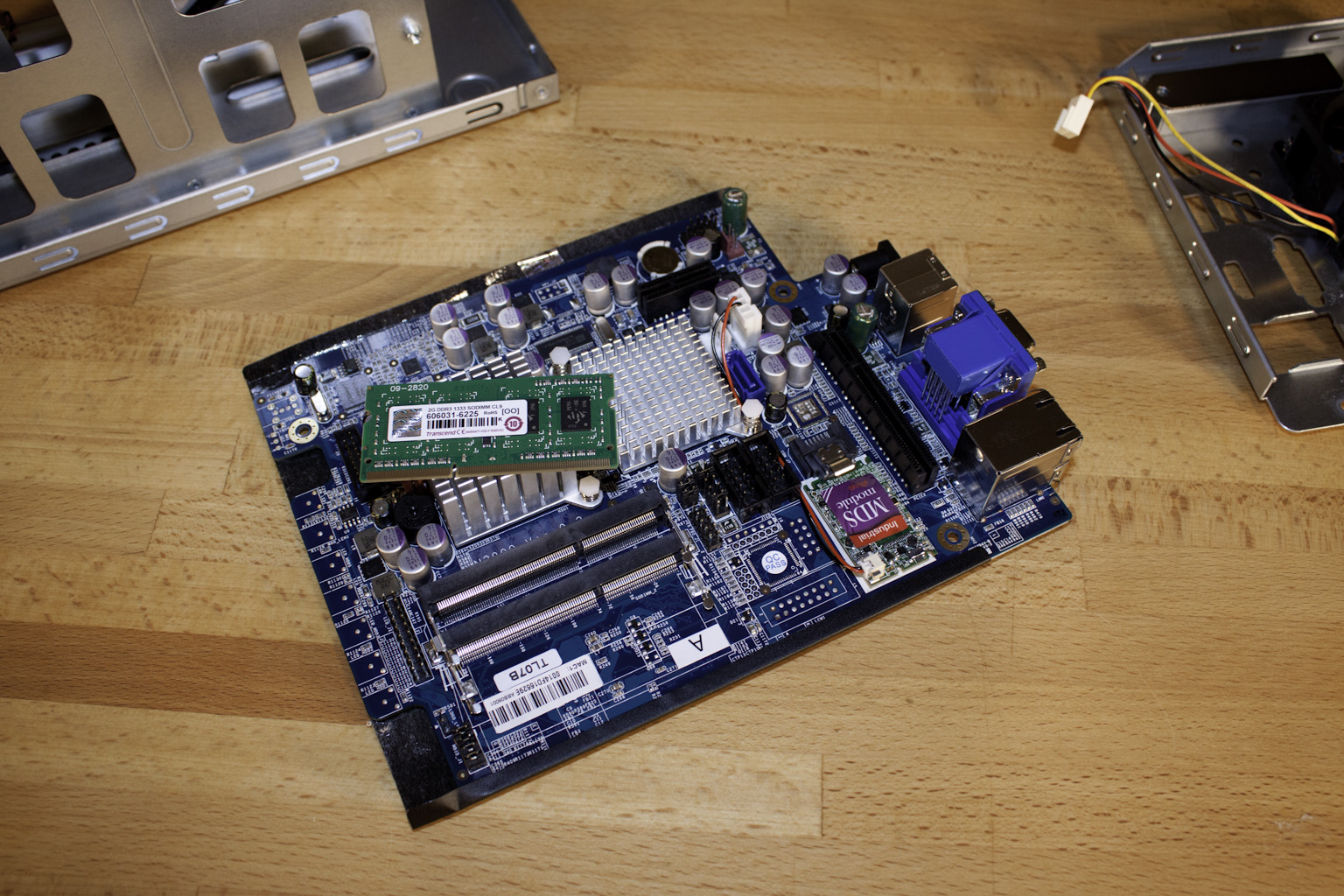 We have already told you what the VGA and HDMI ports are for and the USB 2.0 ports need no real explanation (except to say that they can be for a mouse and keyboard). The eSATA port allows you to either stack other Thecus N2800 devices (or other models that support the feature) or to add on extra storage if that is what you are after. You can see more detail about the N2800 in the video we have below where we tear down the N2800 to show you what is inside.
We have already told you what the VGA and HDMI ports are for and the USB 2.0 ports need no real explanation (except to say that they can be for a mouse and keyboard). The eSATA port allows you to either stack other Thecus N2800 devices (or other models that support the feature) or to add on extra storage if that is what you are after. You can see more detail about the N2800 in the video we have below where we tear down the N2800 to show you what is inside.



